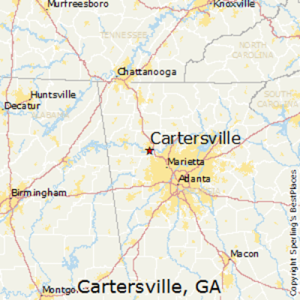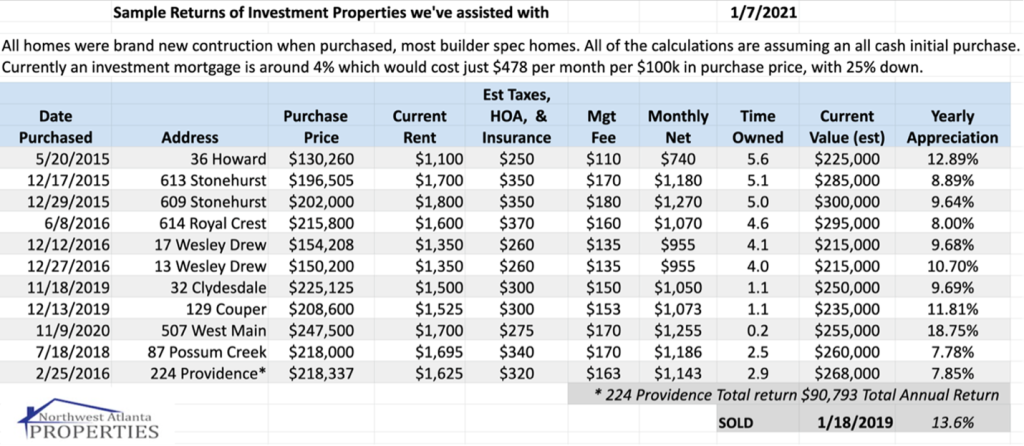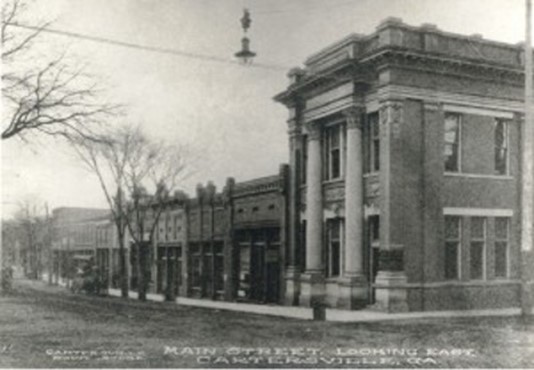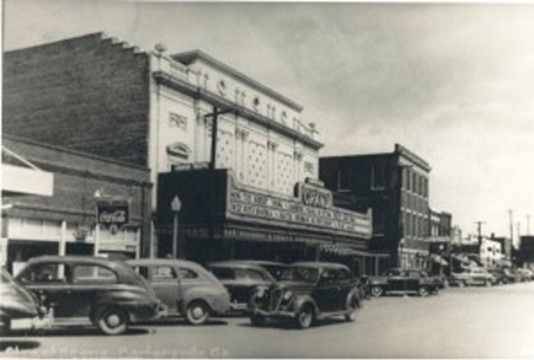Here is our July 12th, 2021 Email Update about Real Estate in Northwest Atlanta!
Good news for many investor owners – rents are rising! From the properties we manage we have seen rents rise dramatically. Rents in the city were up 10.9% from May 2020… and they are accelerating like a race car! Rents are up 5.7% in the past three months of the cycle, although this will likely slow down after school starts. What is causing this unprecedented rise? One factor is that the Low Inventory and Higher Prices of listings for sale is keeping tenants in rentals. Another factor is population growth. Atlanta’s population is up 400,000 since 2015. With only 60,000 apartment units built (enough for 75,000 of the 400,000) during the last five years. We expect this trend to continue.
If you like a complimentary rent evaluation for your rental property just let us know!
June was a continuation of no new homes to be had. Two of the developers we’ve worked with in the past will no longer sell to investor owners and two others have no products until at least September. And the new product will be at significantly higher prices (8% to 10% higher.) The good news is there are some great finds for “better than new” properties out there. One example is a townhome in Canton at $245,000. 3 Bedrooms 2.5 Baths 1621 square feet. Built in 2020. Should rent for $1600 a month. Property Taxes are $200 a month. HOA fee is $95 a month. Insurance should be $75 a month. With 25% down and 4% investor rate the principal and interest is $878 a month add in the $370 for other fees to PITI (P.rincipal I.nterest T.axes, and I.nsurance) is under $1250 a month. This cash flows nicely with the 25% down. Let us know what you’re looking for and we will find it for you!
Why Buy Now – Basically our market is not expected to peak for at least 5 years! During that time, you should expect increasing rents and appreciation. Check out our chart below.
Real Estate Stats and Thoughts
Our primary areas of service are below, and it continues to be a strong seller’s market. I called twenty potential investments for a client last week needing to conduct a 1031 exchange. 8 had sold. 9 had multiple offers. One was listed at $315,000 and had 6 all-cash offers up to $335,000. The average appreciation was just over 26% year over year!!!! The number of sales in May of 2021 was almost identical to May of 2020 and the Median Days on Market are at all-time lows as well. We predict this to be the best time to sell in 9 years!
Highlighted City: Cartersville.
Many of our investors have bought in ‘red-hot’ Cartersville. New homes, good employment with several major employers, decent schools, and lots to do!
Here is some history taken from https://tinyurl.com/CartersvilleGA .
“Following the Cherokee Removal in 1838 and the surveying done for the Western & Atlantic Railroad, a small group of families settled in the area that would become Cartersville. Named for Farish Carter, a wealthy landowner and entrepreneur who frequently traveled through this area between his plantations in Chatsworth and Milledgeville, Cartersville was first incorporated as a town in 1850, following the completion of the railroad through northwest Georgia. Accounts from 1849 show that the town could boast of 150 inhabitants and four or five stores and one hotel. Most of the store buildings were wooden structures facing the downtown square with the depot at its center. Growth continued steadily, especially driven by the heavy train traffic passing through town.
Beginning in May 1864, Cartersville first felt the physical effects of the Civil War. Throughout the year, both Union and Confederate troops marched across the county, including through Cartersville, damaging homes, businesses, and the train depot. In fact, much of downtown was destroyed during the occupation by Federal troops in 1864 and 1865.
Following the war, the town quickly rebounded. By 1866 numerous new businesses began operation, and by 1867, Cartersville was chosen as the new county seat of Bartow County, due to the destruction of Cassville during the war. In 1872, the town was incorporated as the City of Cartersville.
According to local resident John Henry Wikle, Cartersville in the 1870s had a population of 1000 and was a trading center for eight or ten surrounding counties. He said the streets would be crowded with wagons and buggies from all parts of north Georgia, and that passengers and large amounts of freight, especially cotton, merchandise, and building supplies arrived in town by train.
The growth and prosperity of Cartersville continued to be tied to agriculture and mining throughout the 19th century. Iron, barite, bauxite, limestone, manganese, and ochre were all mined in this area for many years. The textile industry got its start in Cartersville in the early 20th century with the building of the American Textile Company, later acquired by the Goodyear Tire & Rubber Company. Many companies in these particular industries have come and gone over the years; however, New Riverside Ochre and Shaw Industries continue these activities today.
With the 20th century came other means of transportation to complement the role of the railroad in the expansion of Cartersville. By the 1920s, what would become U.S. Highway 41 made its way through Cartersville, and Interstate 75 was completed in Cartersville in 1977.
While there have been periods of economic ups and downs for nearly 200 years, today, Cartersville remains a growing and vibrant city with a population of around 20,000. Industries and businesses continue to thrive in and around the city. The historic downtown district includes service businesses, restaurants, retail, museums, and entertainment venues.”
Find more photos of Historic Cartersville on our Gallery page.
Property Management Question of the Month:
Repairs vs. Improvements vs. Maintenance
Every landlord must plan for and complete regular maintenance and repairs to keep their rental properties habitable. Fixing a faulty faucet, AC unit repair, or painting the property are simply part of a landlord’s job description.
In contrast, capital improvements boost the property value, or extend the life of the property. Capital improvements can also go by the terms: capital expenditures or capital expenses.
Many real estate investors like to classify most of the work done in the property as regular repair and maintenance to maximize their tax deductions. As much as it sounds like a good plan in minimizing the property or rental income tax dues, imprudent tax deduction claims may cause more harm than good. Understanding the difference between rental property repairs versus improvements to rental property is essential to avoid trouble with the IRS!
As you update your rental property, here’s what you need to understand about repairs vs. improvements, and where maintenance fits in:
Maintenance – Maintenance is any job done on the property to resolve existing degeneration or prevent damage. Preventative or standard maintenance work is simple. The aim is to keep the property original and functional. Substitutions or replacements of property components that are past their useful life fall under maintenance. Anything more than that ceases to be routine maintenance work. For example, routine servicing of the air conditioning condenser counts as maintenance, as does painting.
Repairs – Property repair is any work that’s done to fix damage or deterioration. Repairs are meant to reinstate the property to the condition it was in before the damage occurred. However, some damages can’t be fixed through repair, but instead, through replacement. In such cases, the work is sometimes considered a capital improvement and treated differently when filing tax returns. Continuing the example from above, calling an HVAC professional to fix a broken line in the air conditioning condenser counts as a repair. Installing a higher SEER (more energy efficient) unit could count as a Capital Improvement.
Capital Improvements – This is defined as any work done to better the state of the property beyond the original condition. Not only do capital improvements increase the property value but also extend its expected life. Also, capital improvements raise the income-generating capability of the property. They include additions, extensions, or changes in the character of the property (i.e through remodeling or renovations). Replacements, even when the original components are damaged beyond repair, are still considered capital improvements.
To differentiate between capital improvement vs. repairs or maintenance work, you just have to consider whether the job increases the property value beyond the original or simply restores it to the value it was in before the damage or change occurred. Maintenance jobs can end up becoming capital improvements when the damage is so extensive that a simple repair won’t suffice in fixing the problem. In that case, you should list the expense as a capital improvement as opposed to repair or maintenance work.
Types of Capital Expenditures
Capital expenses are categorized by the IRS to minimize confusion in filing tax deduction claims. They include:
Betterments: These expenses improve the property’s condition or value by increasing its strength, quality, or capacity. Betterments also result in an expansion of the property or fixing a pre-existing flaw.
Improvements: Any expense incurred in the process of improving the condition of an investment property should be capitalized. Improvements are changes done to adapt the property to a different or new use. Restoration of properties also falls under capital improvements.
Restoration: Rebuilding a property to restore it to the original condition or after damage due to casualty loss is classified as restoration capital expense. Also, replacements that involve a significant part of the property structural aspect fall under restoration.
Adaptation: These are alterations of the property to a use that is different from what you intended when you began renting it.
Tax Consequences of Repairs vs. Improvements
“Fascinating as this is why should I care in the slightest?”
The definition of repairs vs. improvements to a rental property matters because of how you deduct the costs. Landlords can deduct 100% of the costs of repairs and maintenance, in the year when they occur. However, you can’t deduct the cost of capital expenditures all at once – they must be depreciated over time; spread over 27.5 years, to be more precise. Read up on how property improvements should be depreciated or call us for a more thorough explanation.
We also advise that you hire an accountant, well versed in real estate investments and tax laws, to maximize your deductions and depreciation. Also, keep excellent records of all expenses. Save your receipts, invoices, and other paper trails for all repairs, maintenance, and Capital Expenses so you can prove them to the IRS in the event of an audit.
Final Thoughts
Every landlord should know how to categorize capital expenditures vs. repair work. The IRS won’t overlook blunders in your tax returns just because you are a new landlord. Bear in mind that the line between repairs vs. capital improvements sometimes gets blurry. If you replace all your outdated windows with new energy-efficient modern ones, that counts as a capital expense, since it prolongs the usable lifespan of your rental property. If the neighbor’s son throws a baseball through one window by accident, replacing that one window is clearly a repair. But what if you replace a few windows each year, as they become exceptionally old and crusty looking? When the line gets blurry, you may want to talk to your accountant. They’ll tell you to have an argument ready for the IRS in case they challenge you on it, but often you can get away with deducting all of the cost this year.
What do you find confusing about repairs vs. improvements to rental properties?





